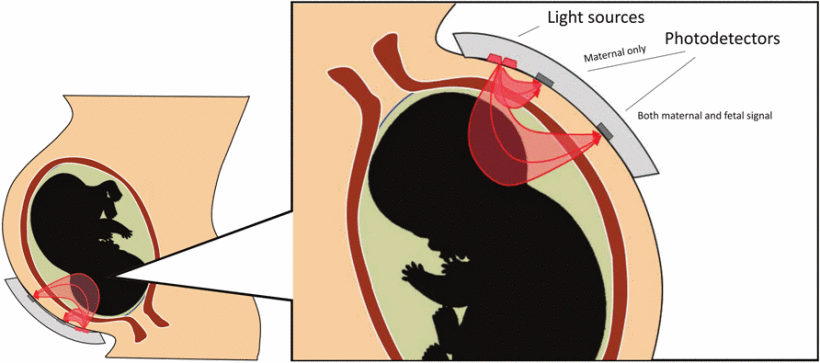Recovering the fetal signal in transabdominal fetal pulse oximetry

Abstract
Non-invasive transabdominal fetal pulse oximetry (TFO) can provide physicians with a better metric of fetal well-being than currently-used fetal monitoring methods. There are two major challenges in this light-based measurement modality. One is in detecting the weak fetal signal at the surface of the maternal abdomen, and the other is in recovering the fetal signal from the diffuse reflectance measured, which contains a mixture of information about both maternal and fetal tissue. In this paper, we describe the TFO system we developed and evaluate its ability to recover the fetal signal in a preclinical setting. In particular, we assess its capability to measure the fetal signal over several thicknesses of maternal tissue and gauge the effectiveness of different approaches in removing the maternal influence from the mixed signal. Our results show that our TFO system, built using commodity low-cost components, can measure the highly-attenuated fetal signal through maternal tissue as thick as 5 cm. Furthermore, we determine that adaptive noise cancellation techniques are the most effective for separating the fetal signal from the maternally-influenced noise. These findings strongly support our TFO system’s ability to perform well on a variety of different pregnant body types.